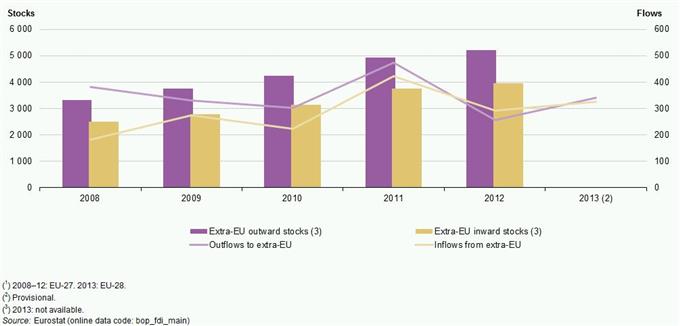AUD/USD Breaks 5 Week Range, is EUR/USD Next?
Talking Points:
- AUDUSD loses 5-week support near $0.8641.
- EURUSD faces October lows ahead of ECB tomorrow.
- Monetary Policy on Trial with RBA, ECB, and NFPs this Week
Even as futures speculators sit on the largest notional US Dollar long position in history, there is clearly appetite for more greenbacks in the near-term as the world reserve currency streaked to a fresh 2014 high today. Evidence mounts that the US economy is 'the nicest house in a bad neighborhood' - US data has been solid and improving, in stark contrast to the rest of the world.
Positioning has been of keen interest to me of recent, insofar as we're testing the same levels in Euro that produced the low in price in July 2012. I think, though, that by judging EURUSD based on the speculators' large accumulated long US Dollar and short Euro positions, a bigger point may be missed: capital flow.
One way to consider this point, that there is a ton of cash awash in the Euro-Zone right now (so stretched positioning data at this point may not mean all that much without context (i.e. a large short position in Euro tomorrow may spark a reversal on the ECB)), is to consider sovereign bond yields. For the uninitiated, bond yields fall when prices rally - so with peripheral yields having sunk from near 6-7% in the Italian and Spanish 10Y to below 3% in some cases, we know capital has come into this asset class with fervor.

Data from Eurostat underscores the notion that there is more capital coming into the region, which may mean that we could see more extreme positioning readings in the US Dollar and the Euro before a major low is set in EURUSD. In 2013, EU-28 foreign direct investment (FDI) inward flows increased by +12% over the 2012 EU-27 levels. In 2012, FDI inward flows had fallen by -31% from their 2011 levels.
Further to this point, as the ECB pushes yields lower with its latest actions, it is also attempting to change investor behavior (no different than what the Fed tried and succeeded at doing - see the US stock markets as exhibit A).
Euro-Zone investors need to search for yield and can only find it outside of the Euro-Zone. Prolonged low rates could accelerate capital outflows, which would help drive a weaker Euro. Indeed, the ECB's balance of payments report for August (most recent reporting period) shows that outflows accelerated through the end of the summer.
The takeaway here is this: just because there is the largest US Dollar long position on record, and the second largest Euro short position since July 2012, that doesn't mean these extreme positions can build further before covering moves take place, especially since the fundamentals support the current trend.
Read more: AUD/USD, EUR/USD Test Range Lows, NZD on the Edge
--- Written by Christopher Vecchio, Currency Strategist
To contact Christopher Vecchio, e-mail cvecchio@dailyfx.com
Follow him on Twitter at @CVecchioFX
To be added to Christopher’s e-mail distribution list, please fill out this form
original source






 Indonesia
Indonesia